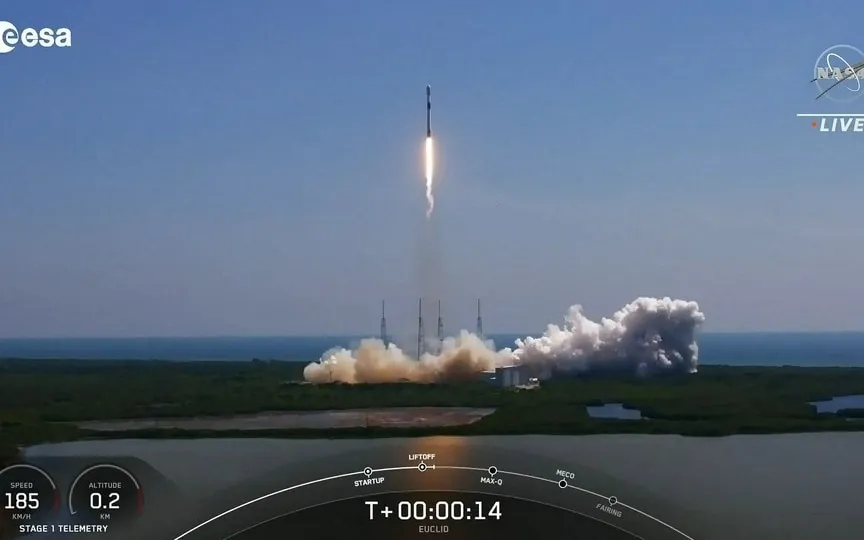Euclid Telescope Launched by SpaceX to Uncover Universe’s Darkest Mysteries
On Saturday, a European space telescope embarked on a mission to investigate the enigmatic and imperceptible domain referred to as the dark universe.
SpaceX launched the European Space Agency’s Euclid telescope toward its final destination 1.5 million kilometers away in the neighborhood of the Webb Space Telescope. It will take a month to get there and another two months before it begins its ambitious six-year study this fall.
Air traffic controllers in Germany announced their success nearly an hour into the flight, clapping and shouting “Yes!” when the telescope called home after a smooth ascent.
“I’m so excited, I’m so excited to see this mission now in space, knowing that it’s on its way,” European Space Agency Director General Josef Aschbacher said from the Florida launch site.
Named after the ancient Greek mathematician, Euclid surveys the billions of galaxies that cover more than a third of the sky. By identifying the location and shape of galaxies up to 10 billion light-years away—almost all the way back to the Big Bang that created the cosmos—scientists hope to learn about the dark energy and dark matter that make up most of the universe and continue to expand it.
Scientists understand only 5 percent of the universe: the stars, the planets, us. The rest is “still a mystery and an enigma, a huge frontier in modern physics that we hope this mission will really advance,” European Space Agency science director Carole Mundell said just before liftoff.
The telescope’s long-awaited 3D map of the cosmos spans both space and time to explain how the dark universe evolved and why its expansion is accelerating.
The lead scientist on the $1.5 billion (€1.4 billion) mission said Euclid will measure dark energy and dark matter with unprecedented precision.
“It’s more like a space telescope, Euclid. It’s really a detector of dark energy,” noted Rene Laureijs.
Fifteen feet (4.7 meters) tall and nearly as wide, Euclid contains a 1.2-meter (4-foot) telescope and two scientific instruments capable of observing the cosmos in both visible light and near-infrared. A huge sun shield is designed to keep sensitive systems properly exposed to cold temperatures.
NASA, which contributed to the Euclid infrared detectors, is coming up with its own mission to better understand dark energy and dark matter: the Rome Space Telescope, which will launch in 2027. The U.S. and European Webb telescopes may also join the search, officials said.
Euclid was supposed to launch on a Russian rocket from French Guiana in South America, Europe’s main spaceport. The European and Russian space agencies cut ties after the Ukraine invasion last year, and the telescope moved to SpaceX from Cape Canaveral. According to project manager Giuseppe Racca, waiting for Europe’s next-generation, yet-to-fly Ariane rocket would have meant a two-year delay.




